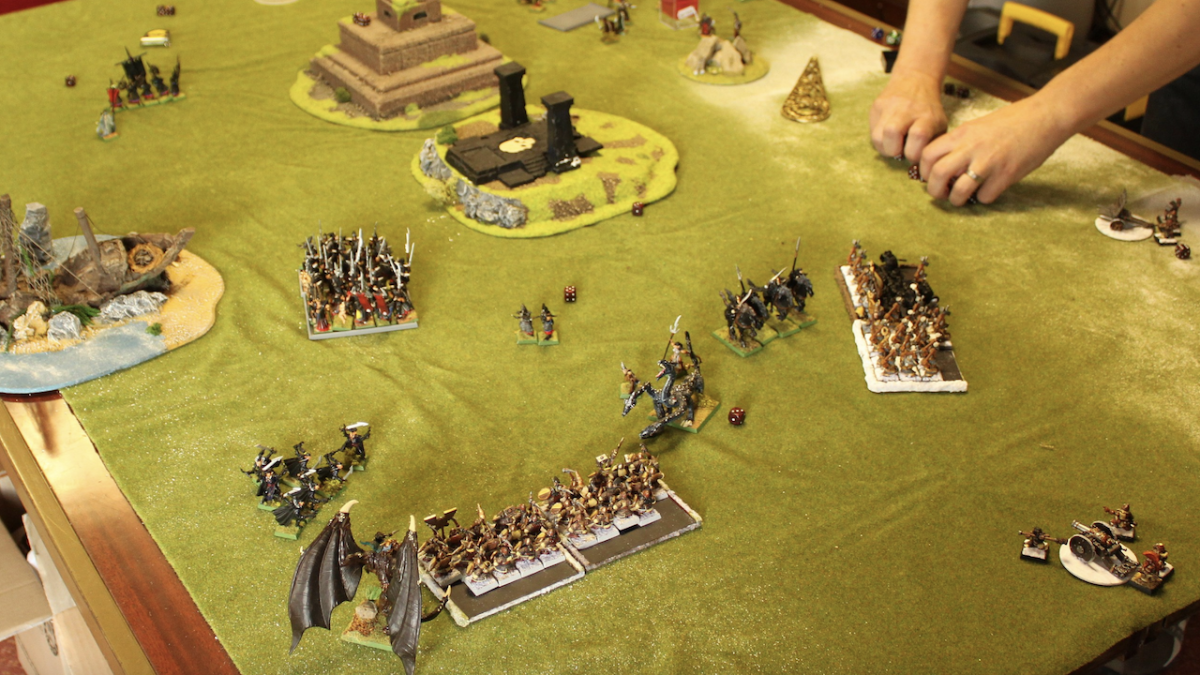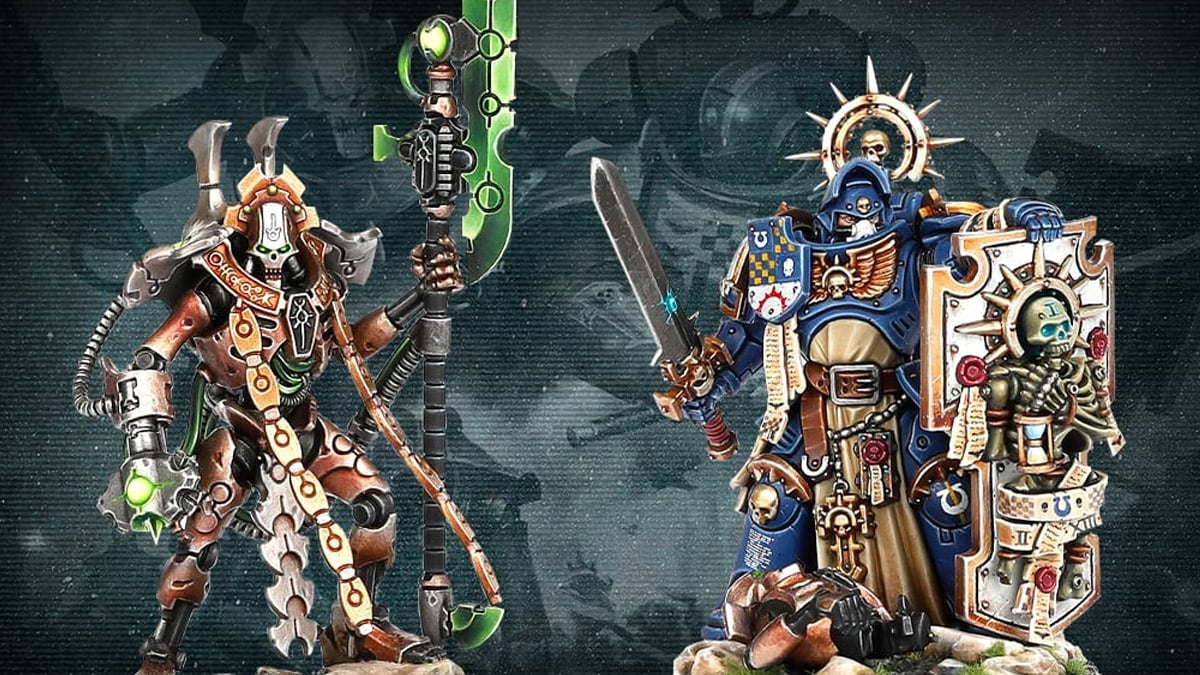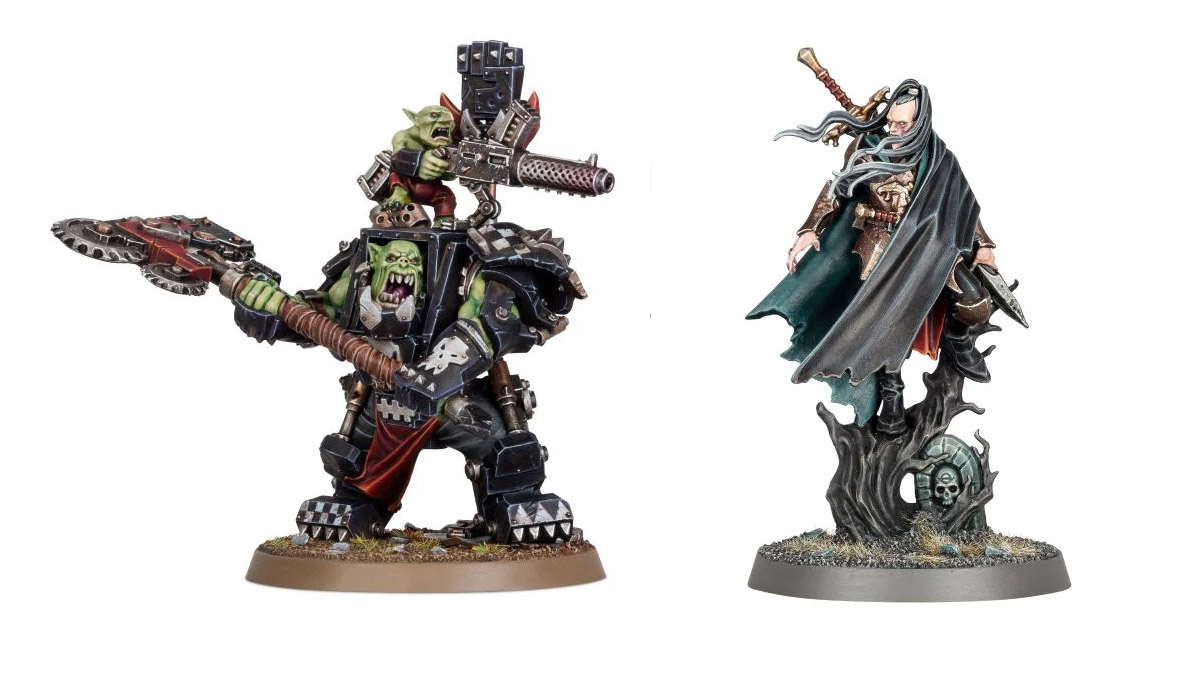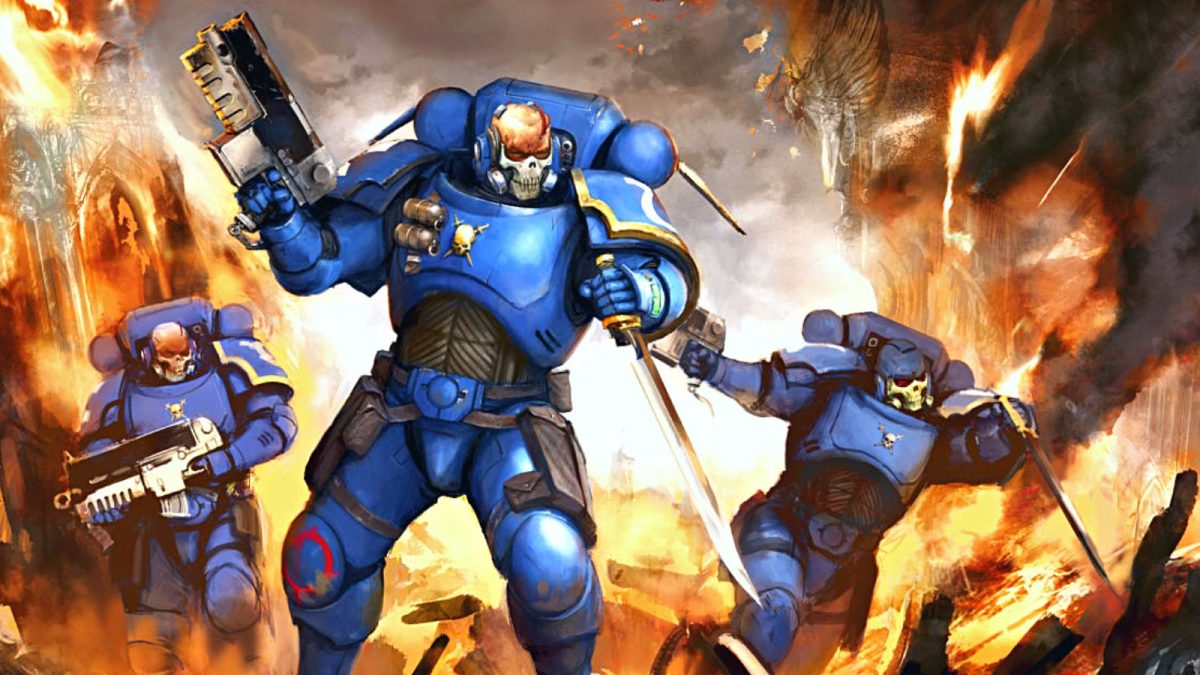Humans, orcs, and elves locked in a huge standoff… It could be any of the fantasy epics that have spiraled from the hugely influential Lord of the Rings saga.
J. R. R. Tolkien drew widely from many traditions to create his new mythology. Under his pen, fairly-like elves became human-sized, spiritual creatures based on the Ljósálfar of Norse legend. The name of the orcs was taken from the oldest poem known in Old English, Beowulf, adding monstrous traits from Northern European folk tales and Victorian fantasy.
These concepts slipped into popular culture as Tolkien kick-started the epic fantasy genre. Today, millions enjoy sprawling sagas that wouldn’t be the same without The Lord of the Rings. Like Tolkien’s saga, epic franchises The Legend of Zelda, Dungeons & Dragons, and Warcraft are constantly expanding into new media, finding new fans on the way. At the moment, the momentum is with the vast mythology of Warhammer.
Chances are, if you’re not already familiar with the Warhammer saga, you will be soon, in one way or another. Warhammer 40K has established a vast mythology across collectible miniatures, epic war guides, book series, and video games. In December 2022, it was announced that an exclusive Amazon series is set to bring the epic to the screen, with Henry Cavill producing. But why is there a 40K at the end of Warhammer? For those new to the tabletop gaming world, they’re actually two separate entries.
How are Warhammer and Warhammer 40K different?

While both are tabletop battle games focused on conflict and featuring similar terms and species, Warhammer 40K is a distinct spinoff from Warhammer that has surpassed the original.
Published by U.K. manufacturer Games Workshop in 1983, Warhammer was the first tabletop wargame to use its own miniature figures to fight. Fantasy battles codified by rule books pit players against each other across a table where their warriors vie for victory decided by dice rolls and math. Warhammer took its lead from existing war games, with dark gameplay based on medieval warfare. Set on a different world, its resemblance to Earth explained by internal logic, heavy fantasy elements such as magic and mythological creatures drew on the work of Tolkien, Poul Anderson’s Broken Sword, and Michael Moorcock’s Elric series. Playable factions included the Empire, Beastmen, Daemons of Chaos, High Elves, Dark Elves, and Dwarfs.
It inspired a broader universe, including novels. Still, Warhammer is in the past tense as the final supplementary rule book was released in 2015 when Games Workshop relaunched the game as Warhammer Age of Sigmar. The new Warhammer introduced a new game system and setting in the Mortal Realms.
The future of Warhammer

Warhammer 40K is a miniature wargame like its similarly named forbear. As the number suggests, it’s set in the far future. Launched by Games Workshop in 1987, it transported fantasy elements to a dark and dystopian sci-fi setting.
Warhammer 40K is an irresistibly miserable take on mankind’s future, or it is now, anyway. The second rulebook, released in 1993, reframed the game to make it unambiguously bad news for humanity. By this time, human civilization covers millions of worlds but is dormant under a never-seen immortal emperor, fated to fall to the alien, supernatural, and chaotic forces besieging it.
Players create armies from factions, including the Imperium of Man’s Space Marines. Other factions include the armies of Chaos, the android Nekron, the elvan Aeldari, and war-mongering Orks.
Although it translated many fantastical elements into the future, adding a science-fiction spin, Warhammer 40K drew on broader influences. Among those were John Milton’s Paradise Lost, Frank Herbert’s Dune, the works of H.P. Lovecraft, and the regular satirical content of the British dystopian comic and original publisher of Judge Dredd, 2000AD.
Warhammer 40K soon surpassed Warhammer, becoming the most popular miniature wargame in the world, and spawning a vast spinoff universe. Official literature began as soon as the game launched in 1987, and rulebook updates have been released regularly to adapt and freshen the gameplay, the latest being 2020’s ninth edition. With 65 video games published in just seven years, the game has won millions of fans on PC and console.
Do Warhammer and Warhammer 40K exist in the same universe?

It’s easy to draw links between elements of Warhammer and Warhammer 40k, but both are set in entirely different universes. The line is far more distinct than the original vision that saw Warhammer 40K as a sci-fi version of Warhammer. While Warhammer is confined to one world that could theoretically be one of the many in the Warhammer 40K universe, that early suggestion ended when the original game was destroyed at the End of Times, launching the sequel, The Age of Sigmar.
The artificial Necron of 40K may recall the undead of Warhammer, but they are unrelated. The same is true of the orks and aeldari, where the archetypes set by epic works like The Lord of the Rings have stuck around. Typically, chaos doesn’t play by the rules quite as much. Some Age of Sigmar models can be used in Warhammer 40K as part of the chaos factions, as chaos deities are shared between the games. However, the technology of 40K means you send those models the other way.
That unpredictability aside, Warhammer and Warhammer 40K are as distinct from each other as they are from the vast influences that inspired them.











Published: Jan 8, 2023 07:46 am